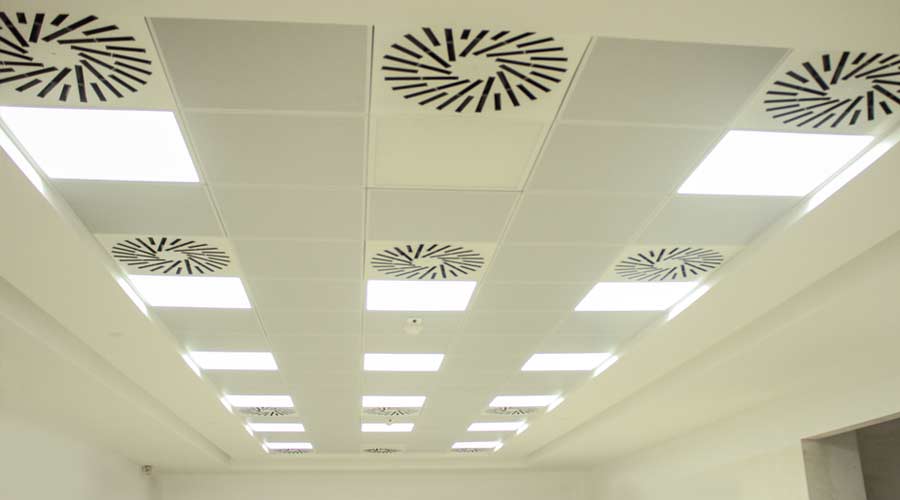COVID-19 undoubtedly impacted a wider swath of people than anyone could have imagined two years ago. This public health crisis also brought many functions of hospitals to light for patients who might not have thought about them before. One of those important functions is ventilation and filtration and their roles in caring for and protecting patients.
Common misconception
One critical responsibility of facility managers is to ensure all functions within a hospital are working to maintain the healing environment without putting patients and their health in jeopardy. Ventilation is no exception.
One common misconception about healthcare facilities is that diseases spread through a hospital’s ventilation system. If a hospital’s ventilation system is designed and maintained properly, it should help stop those pathogens from spreading between patients.
This issue came to light during the onset of the COVID-19 pandemic when many people avoided healthcare facilities out of fear of coming in contact with the coronavirus. Certainly, hospital-acquired infections are always a concern, but the specific fear of the airborne coronavirus increased patient hesitancy. Knowing this hesitation and the detrimental effects of skipping treatments or routine doctor visits can have on patient health, facility managers must ensure they effectively maintain and upgrade ventilation systems.
COVID-19’s impact
The COVID-19 pandemic forced healthcare facilities to take a closer look at ventilation systems and their functions. Many health systems relied on negative pressure rooms and wards during this time. They also used airborne infectious isolation rooms (AIIR) to separate COVID-19-positive patients from those who were seeking care for other reasons. An AIIR must be designed with a single-pass approach to bring clean air from the clean zone of a facility into the contaminated zone to slow the spread of an infectious disease.
During the early days of the pandemic, researchers did not know how easily or within what parameters this virus could spread. This situation prompted healthcare facilities to implement negative pressure and AIIR measures to slow the spread and ensure healthcare workers and other patients would not be exposed to the coronavirus. Many of these protocols remain in place, but managers should continue to monitor them, given the public’s increased awareness and sensitivity to the transmissibility of some illnesses and airborne pathogens.
Updated standards
Standards for ventilation systems continue to be evaluated and updated in light of COVID-19 and emerging technologies. One factor facility managers must watch closely are increased rates for air filtrations and air exchange rates, which often exceed the capacity of older ventilation systems. Because of this situation, maintenance teams must be even more vigilant to ensure all systems work properly in order to maintain safe environments for patients.
One recent update involves ANSI/ASHRAE/ASHE Standard 170. This change includes expanded requirements to allow AIIR exhaust discharge to general exhaust under certain conditions, as well as extensive revisions to outpatient and residential portions of a healthcare facility.
New system designs can incorporate these new provisions, but it is important to note that the additional filtration and air volume requirements increase equipment size and energy use. If a central ventilation system serves two adjacent spaces, the increased requirements might call for replacement of the central system because its capacity might not meet the new requirements.
The goal for facility managers is to provide a safe and comfortable environment for patients and staff throughout the entire facility, and air ventilation and filtration are critical to achieving this goal. As facilities continue to emerge from the COVID-19 pandemic, these critical functions need to remain at the forefront to continue providing a high level of care to patients in need.
Michael Burgett is an area vice president for Medxcel. He brings 20 years of leadership experience in healthcare in North America, where he has held positions in construction and design, site selection, facilities management, capital equipment sales and operational and customer development.

 How Healthcare Facilities Can Be Truly Disaster-Resilient
How Healthcare Facilities Can Be Truly Disaster-Resilient TriasMD Breaks Ground on DISC Surgery Center for San Fernando Valley
TriasMD Breaks Ground on DISC Surgery Center for San Fernando Valley Bigfork Valley Hospital Falls Victim to Data Breach
Bigfork Valley Hospital Falls Victim to Data Breach AI-Driven Facilities: Strategic Planning and Cost Management
AI-Driven Facilities: Strategic Planning and Cost Management  Double Homicide Suspect Hides from Police in Upstate Community Hospital
Double Homicide Suspect Hides from Police in Upstate Community Hospital